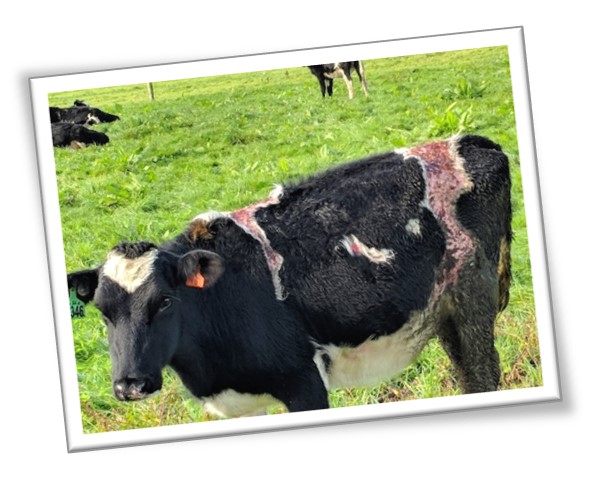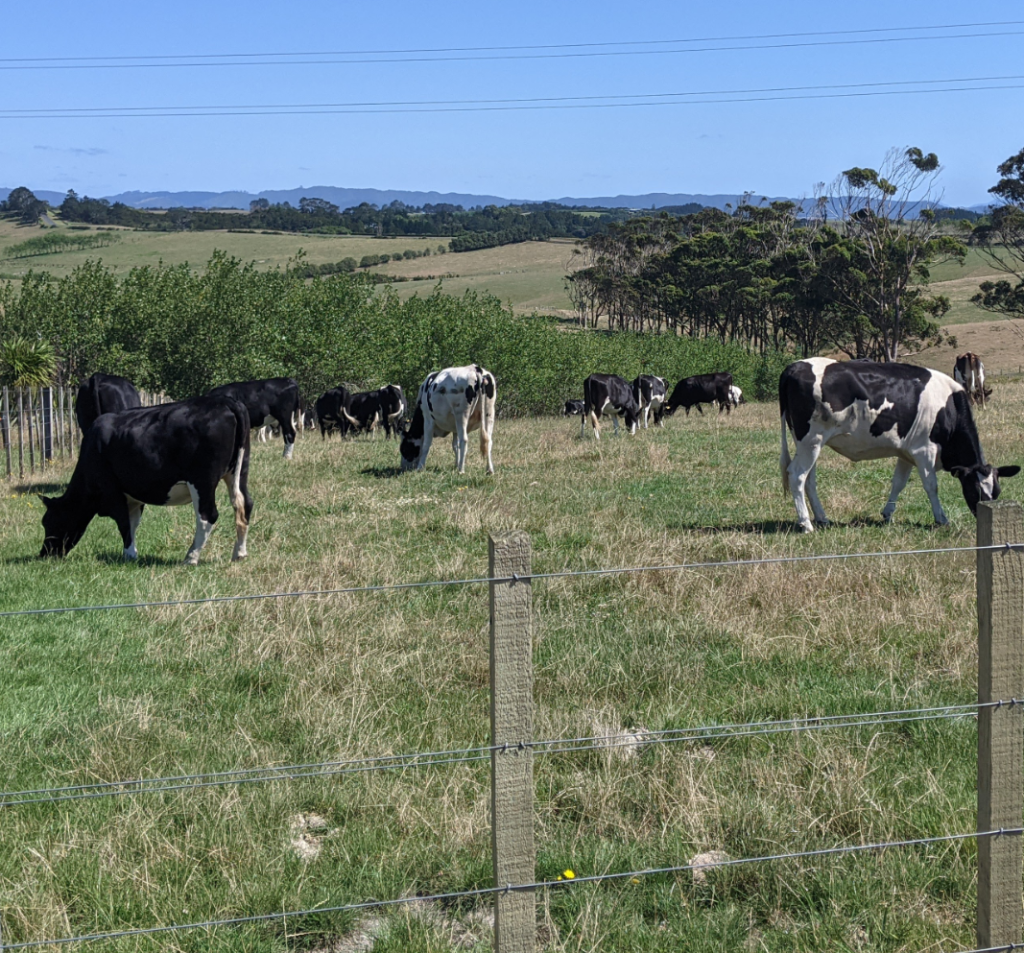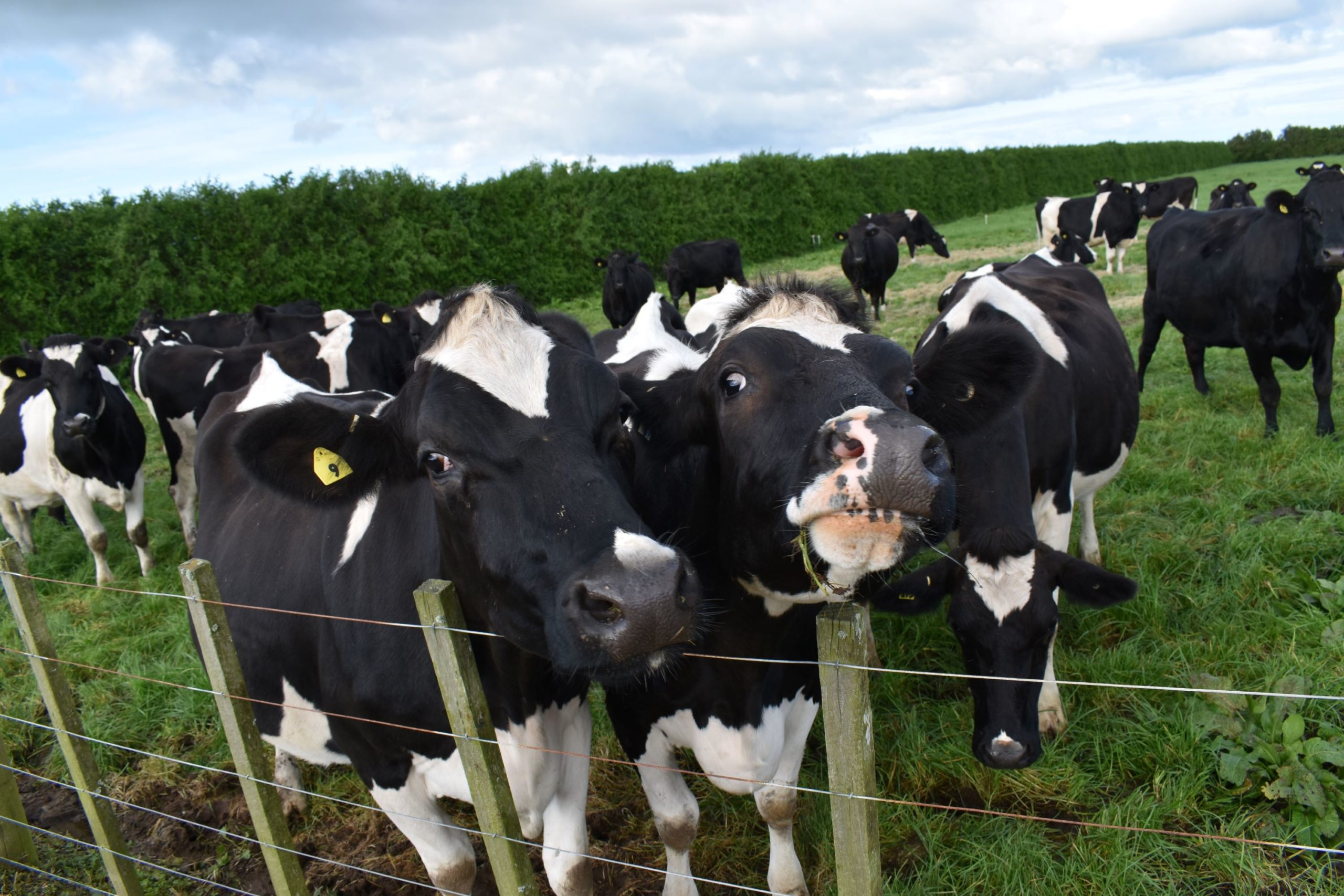Facial eczema is a disease of cattle which considered to be one of the most serious production-limiting diseases of New Zealand farm animals. The disease is not always visible: around 70% of a mob may be affected if just 5% of the animals show symptoms of facial eczema.
The Problem
Facial Eczema is a disease of the liver caused by a mycotoxin (sporidesmin) that affects all ruminants even when they have low exposure to the fungus (Pithomyces Chartarum). This fungus grows on dead and dying pasture litter when moisture and temperatures are favourable for spore growth. Fungal growth usually begins end of January or early February, especially when the nights become warm and humid (>12 degrees Celsius), or when a dry period is followed by rain. A slow build-up of spores and continual exposure over a period of time will also result in similar risk levels.
What are the symptoms?

The following can result within 1 – 2 weeks after exposure to high spore counts (or longer term exposure to spores at lower levels) in affected animals:
- Dullness, weakness, loss of appetite, and ill-thrift
- Sun sensitivity (affected animals might seek out shade), sunburn, redness, and swelling on unpigmented or hair-free areas
- Sudden death.
Prevention is best – what to look for in your pasture?
Most of your local vets will test for spores free of charge. All our growers for NZ Grazing are supplied with Techion testing kits that make it simple for them to test as often as they like using a faecal sample posted off from the mailbox.
The process of how to take a sample.

Pasture sampling process:
- Use shears or scissors to cut a handful of pasture from about 1 cm above ground level in 5 or more places which are at least 10m apart.
- We require at least 100 grams of pasture.
- Please ensure your sample bag is clearly labelled, and that it is leak proof.
- If you sample the same site regularly, follow the same route across it.
If unable to get the sample into your local vet clinic immediately, refrigerate (but do not freeze!). The sample can last for several days in the fridge
Faecal sampling process:
- Take a sample using a teaspoon size scoop or spoon.
- Level the scoop using the back of a knife, stick, or finger ensure it is free from debris.
- Place it in a sample bag (if the samples are pellets, squash them into the scoop to get the same volume of sample).
- Repeat the procedure until a satisfactory number of samples have been collected (minimum 10 samples), placing all samples in the same bag.
- Take a range of sample types if possible (e.g. runny, pellets, firm).
- Exclude air from the collection bag to diminish the rate of development and hatching eggs.
- Label the sample bag clearly and make sure that it is leak proof.
- Refrigerate (but do not freeze), if you are unable to get the sample to the local vet clinic immediately or sent away to Techion.
- Always send samples away at the beginning of the week and avoid public holidays

Prevention is best – what to do?
- Spraying pasture with a fungicide containing the active ingredient CARBENDAZIM will kill active spores in the fungus as they germinate. This will reduce the amount of toxin likely to be eaten by the animals (for more on this read Ian’s earlier article ) Its best to administer at a time when spore levels are low.
- Application of Zinc:
- Addition of zinc to feed or water
- Application of zinc boluses (Face-guard or Time Capsules)
Zinc is potentially a toxic element, and it is easy to calculate dose rates and volumes incorrectly for trough and drenching systems.
We recommend the application of the correct sized Time Capsule / or correct number of Faceguard boluses. Accurate live weight measurement is essential to ensure the correct bolus size is being used. Guesswork leads to error!
Our service managers are well trained in assisting you with your FE programme. You can also talk to your Vet about testing for GGT to identify sick animals, and monitor the success of your prevention plan.
Case Study: John Taylor from JA & G Taylor Farms
John Taylor has been grazing for NZ Grazing since 2010 but has been grazing heifers privately long before this. John has excellent facial eczema management systems in place and has never had eczema affected stock on his farm. Some facial eczema management knowledge from John

Spore testing is a big part of the control for facial eczema. Knowing what the spore count is on your farm is crucial.
I start testing in December with Faecal Testing. The ground when it is warm only takes a bit of moisture to change suddenly. I test again if there is any change to conditions, especially rain, to see if there is any increase in spores.
Keeping track of your spore levels is really important as the continual exposure to low spore counts can do as much damage as a high spike. Once the spores have risen it could be too late as the heifers could already be affected.
I believe that boluses are the only way to go. You can not guarantee heifers are getting enough protection from zinc in water troughs.
The eczema season can go for a long time. In Northland we can still see high spores in April/May. It is so costly with the price of zinc boluses that you don’t want to be putting them in too early. The boluses only last for 4-6 weeks. It is a relief once they have been administered to the heifers as there is nothing more we can do. It is very important to keep track of when they were administered. You need to start spore testing again 4 weeks after, or when the boluses protection period ends.
Impact of Copper
There is sound research (read more ) that inorganic copper has a negative impact on the ability of zinc to counteract the toxins in the liver. This means you should not administer copper to your animals during the facial eczema season.
Additional Resources
If you are unsure how to manage FE on your farm contact your local vet, or read the information found at DairyNZ
Here are the links to a couple of videos which will help you to understand from one of our favourite Vets, Emma Cuttance.
